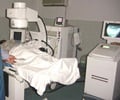Researches at the Bristol Robotics Lab are using urine to produce energy by creating stacks of microbial fuel cell and self sustaining cathodes.
Can urine be used to produce energy without causing pollution. The team of researchers from Bristol certainly feel this is possible and is a sustainable project for the future.
Current Energy Sources - Fossil fuels such as coal, oil and gas are the main sources of energy we have today. However, these sources are polluting and it will not be long before we have exhausted them. Scientists are therefore on the lookout for newer sources of energy especially those that are non-polluting and renewable.
One of the major advances in the field of energy is the development of microbial fuel cells. These are devices that use microorganisms to convert chemical energy into electrical energy. Such energy could be used in wastewater treatment plants where the microbes could feed on the wastewater and produce energy to power the plant. If microbial fuel cells are successful in producing energy on a large scale, this energy will be ideal in that it is nonpolluting as well as renewable.
Structure of microbial fuel cells
Microbial fuel cells consist of an anode compartment and a cathode compartment separated by an ion selective membrane. The anode and the cathode are connected via an external circuit. The anode compartment contains microorganisms with some fuel such as wastewater. Microorganisms react with the fuel under anaerobic (without oxygen) conditions and produce electrons and protons. The electrons travel via the external circuit to the cathode whereas the protons travel through the membrane. These two combine with oxygen in the cathode compartment to form water.
Urine as a source of power for autonomous robots
Researchers at the Bristol Robotics Lab, a collaborative UWE/University of Bristol research facility have spent more than 3 years in developing a robot whom they named EcoBot-III. This robot contains a number of microbial fuel cells and uses waste material such as dead flies and wastewater to power it.
The researchers at the same laboratory have now received a grant for a project that will focus on three major areas - creating stacks of microbial fuel cells, self sustaining cathodes and using urine as a source of fuel. Dr Ioannis Ieropoulos, Professor John Greenman and Professor Chris Melhuish will be carrying out the research along with the technical team at the laboratory.
The amount of energy produced by microbial fuel cells at present is very low. The researchers aim at getting the microbial fuel cells (MFC) to work in stacks in order to increase the amount of electricity produced. The cells will be connected electrically but at the same time will remain isolated. The cells will be fueled with liquid in a continuous flow.
However, the most interesting part of their project would be the use of urine as a source of fuel. Dr Ieropoulos explains that since urine is chemically very active, rich in nitrogen and contains urea, chloride, potassium and bilirubin, it will be a very good fuel for microbial fuel cells. The researchers are planning to collaborate with a waterless urinal company for the project.
The researchers also aim at making the microbial fuel cell self-sustaining. Instead of chemicals on the cathode side that are used at present, they propose to use oxygen-producing organisms (such as algae). The waste from the algae can be used to feed the bacteria on the anode side. Dr. Ieropoulos hopes that this research will help change the way people think about energy and human waste.
Besides multitude application on very useful area of utilization of this energy source would be in space travel.
"The author wishes to thank Dr Ioannis Ieropoulos for his inputs to Medindia in providing clarity with regards to his research."
Ref 1 - Urine: Waste product or future power source? ScienceDaily. Retrieved August 4, 2010, from http://www.sciencedaily.com- /releases/2010/07/100727082658.htm
Ref 2: University of the West of England (2010, July 28).
Source-Medindia












